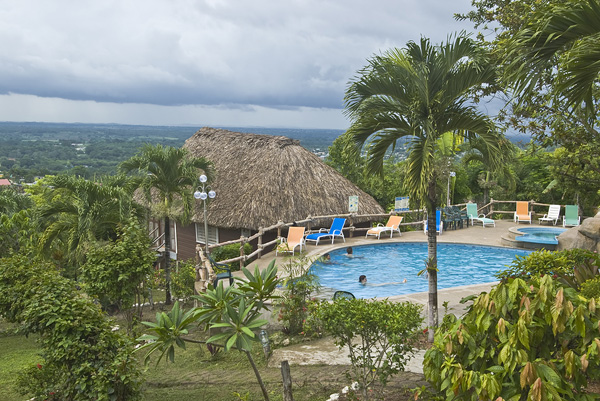
In the lush, verdant landscapes of San Ignacio, public transportation is a vital aspect of daily life, especially for those without personal vehicles. The town, known for its rich history and proximity to ancient Mayan ruins, offers a variety of public transportation options that cater to both locals and tourists alike. The most common forms of public transport in San Ignacio are buses and taxis, with no formal names for the systems as you might find in larger cities. These services are essential for navigating the town’s streets and connecting to other parts of the country. For expats considering a move to San Ignacio, the question of whether one can live comfortably without a car is a valid concern. While the town is walkable and the public transportation system is generally reliable, the convenience of a car can be appealing for exploring more remote areas or for those with a less flexible schedule.
Buses
The backbone of San Ignacio’s public transportation is its bus system. Buses in San Ignacio are operated by various companies, with the most prominent being the National Transport buses. These buses connect San Ignacio to other towns and cities across Belize, including the capital, Belmopan, and Belize City. The cost of a bus ride is relatively inexpensive, making it an economical choice for daily commutes or longer journeys. Buses run on a schedule, but the frequency can vary, with more buses available during peak hours. While the buses are generally safe, it’s advisable for travelers to keep an eye on their belongings, as with any public transport worldwide. The bus terminals buzz with activity, and locals are often willing to help expats and tourists navigate the routes. For children attending school or individuals working in nearby towns, the bus system is a lifeline, providing a reliable means of transportation.
Taxis
Taxis in San Ignacio offer a more personalized mode of transport. They are readily available throughout the town and can be hailed on the street or found at designated taxi stands. Taxis in San Ignacio do not use meters, so it’s important to agree on a fare before starting the journey. The rates are generally reasonable, but expats should get familiar with the average costs to avoid overpaying. Taxis are considered safe, and many drivers take pride in their role as informal ambassadors of Belizean hospitality, often sharing local knowledge and recommendations with passengers. For expats living in San Ignacio without a car, taxis provide a convenient option for grocery shopping, visiting friends, or when public buses are not available.
Walking
San Ignacio is a relatively small town, and many residents find that walking is a viable option for getting around, especially within the town center. The town’s layout is conducive to pedestrian traffic, with sidewalks and pedestrian-friendly areas that make it easy to navigate on foot. Walking is not only a healthy choice but also allows expats to immerse themselves in the local culture, stopping at street vendors, chatting with residents, and enjoying the vibrant street life. For those living in the central areas, walking combined with occasional bus or taxi rides can be sufficient for most daily activities. However, during the rainy season or for trips outside of town, other forms of transportation may be necessary.
Car Rentals and Driving
For expats who desire the freedom to explore beyond the reach of public transportation, car rentals are available in San Ignacio. Having a car can be particularly useful for visiting more secluded attractions, such as the Mountain Pine Ridge Forest Reserve or for making spontaneous trips to neighboring Guatemala. While renting a car offers flexibility, it also comes with the responsibility of navigating local driving conditions, which can include unpaved roads and limited street lighting. For those considering purchasing a vehicle, it’s important to weigh the costs of ownership, including maintenance and fuel, against the convenience it provides.
Conclusion
In conclusion, San Ignacio’s public transportation system, while not as extensive as those found in major metropolitan areas, provides functional and affordable options for residents and visitors. Expats can live comfortably without a car, especially if they reside near the town center and have a flexible schedule. The combination of buses, taxis, and walking covers most transportation needs within the town and to other parts of Belize. However, for those who wish to explore more remote areas or prefer the convenience of their own vehicle, renting or owning a car is a worthwhile consideration. Regardless of the mode of transport, San Ignacio’s charm and the warmth of its people are best experienced through the slower pace of life that this beautiful Belizean town offers.


